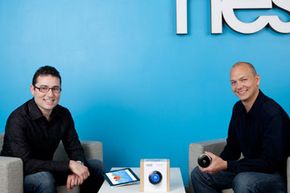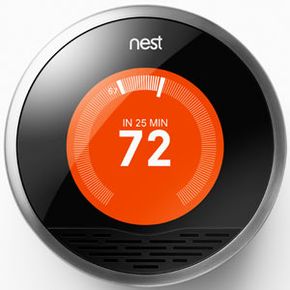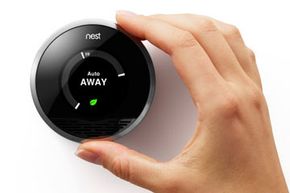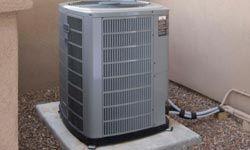Brrrrrrr. How did it get so cold in here? Did someone mess with the thermostat? The household temperature setting has long been the source of arguments between cohabitators, but you probably don't think much about your thermostat until you're uncomfortable.
Your heating, air conditioning and the ductwork that carries and recycles air between rooms make up the HVAC (heating, ventilation and air conditioning) system for your home. Data from the U.S. Department of Energy suggests that your HVAC system accounts for about half of the energy consumption in your home [source: DOE]. For those with electric heating and air conditioning, that's half your home's electric bill, too.
Advertisement
You control your home's HVAC through your thermostat. All you have to do is select your heating and cooling options and to set your desired indoor temperature. The thermostat does the rest, switching systems on and off based on the temperature it detects in the room.
The Nest Learning Thermostat goes beyond this simple temperature detection to make a real impact in your HVAC energy consumption. In this article, we'll see what Nest can do, how it does what it does, who's behind it and what challenges it faces in the HVAC industry.
To understand Nest's value, let's first look at what other thermostats do. All thermostats let you set a desired temperature and monitor the current temperature. You can also switch between heat and AC.
Many thermostats rely entirely on you to set the temperature. Though in recent years, manufacturers have offered programmable thermostats that can help you save on energy. This lets you program certain temperatures for certain times of the day -- letting you automatically lower the temperature when you'll be out of the house, for example. However, due to the complexity of these thermostats, people don't always program them correctly, which can negate most, if not all, of their energy-saving potential.
The Nest Learning Thermostat aims to solve this problem. Nest actually programs itself by learning your behavior patterns and desired temperatures for certain days and times during the week, and then building a schedule for your HVAC. It's not the only smart thermostat on the market, but Google's purchase of Nest Labs for a reported $3.2 billion in January 2014 has made it the most famous.
So who's the brains behind Nest? Would you believe it's the same mind behind the iPod and iPhone? Before we get into the technical details, let's look at how Nest got its start.
Advertisement





